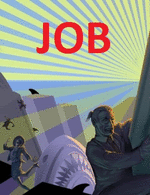Here is my editorial, which appears in the April 2008 issue of California Freedom: On March 21st, I participated in an antiwar discussion panel at Santa Monica's Track 16 art gallery. I was there as a contributing writer to Cost of Freedom, an anthology of antiwar activism [California Freedom, February 2008]. With me on the panel was Michael Palecek, one of the book's editors, and two of the other 75 or so contributers, poet Rex Butters and artist Elena Siff Erenberg.
I'd been asked to MC the event, and I kept the conversation flowing between the panelists and the audience. Palecek described his experiences as a "federal prisoner for peace," having been imprisoned several times in the 1980s for trespassing onto military bases during his protests. His story drew one of the loudest round of applauses from the audience, matched only by the applause for the anti-Bush/antiwar poem read by Butters. Erenberg lamented that, because few people today visit galleries, antiwar artists have limited influence. Nevertheless, her artwork may be seen at ElenaMarySiff.com.
Whatever its faults, the Nolan Chart demonstrates the error of dividing people into only two political camps. Ron Paul and Dennis Kucinich are closer to each other on war and civil liberties than either is to Clinton or McCain. Palecek was the Democratic Party's candidate for Iowa's 5th Congressional District in 2000. After the panel discussion, an audience member introduced himself and his lady friend to me as "huge Ron Paul fans." This young man also thanked me for quoting from Randolph's Bourne's "War is the health of the state" essay. Some libertarians wish the LP would ignore the war and focus on economic issues -- "Things we all agree on." -- but war is an economic issue.
Anarchist playwright Ben Pleasants [California Freedom, October 2007] spoke from the audience about how the war is "bankrupting" this country, and discussion turned to whether the U.S. was headed for inevitable economic collapse due to the extravagant borrowing and spending to fund our endless wars.
 The panel discussion was followed by a social mixer.
The panel discussion was followed by a social mixer.
Two women expressed curiosity over my Porcupeace button, asking if it was "the Libertarian mascot." I explained that the Porcupeace combined the twin principles of self-defense and non-aggression. The porcupine was no predator, but it would defend itself if attacked. I'd stacked free Porcupeace buttons (and other antiwar/antistate/anti-IRS, anti-Drug War, etc. buttons) on a table alongside antiwar flyers courtesy of Lawrence K. Samuels (thanks, Lawrence!). The flyers bore the Porcupeace sign, the websites for Libertarians for Peace and the state and national LP, and LPC membership forms. One woman loved the buttons, and took one of every flyer. "You've inspired me to become a libertarian!" she said. Yet to attract and keep people like her, and the young couple who love Ron Paul, the LP must be loudly pro-peace and pro-civil liberties.
Threats to both peace and civil liberties were addressed at Track 16 and in Cost of Freedom. It's this appreciation for peace and liberty that united the people at Track 16. The enemy are not ordinary Americans who disagree on some issues, but growing state power, which is inevitably misused and abused. Cost of Freedom co-editor Whitney Trettien, an MIT graduate student and Green Party activist, had earlier expressed surprise to me that any libertarians supported the war. Every libertarian she'd met opposed it. A hopeful sign. Cost of Freedom is an inspiring book, a celebration of those with the courage and ideals to protest against statist lies and aggression.
Although I'm a contributing writer, I received only a contributor's copy; no monetary pay or royalties. I'm told that "a portion of the proceeds from the sales of the book is set aside to supplement funds for the work of national peace and antiwar organizations."
______________________________________
If you wish to see the entire April issue of California Freedom, click here.









No comments:
Post a Comment